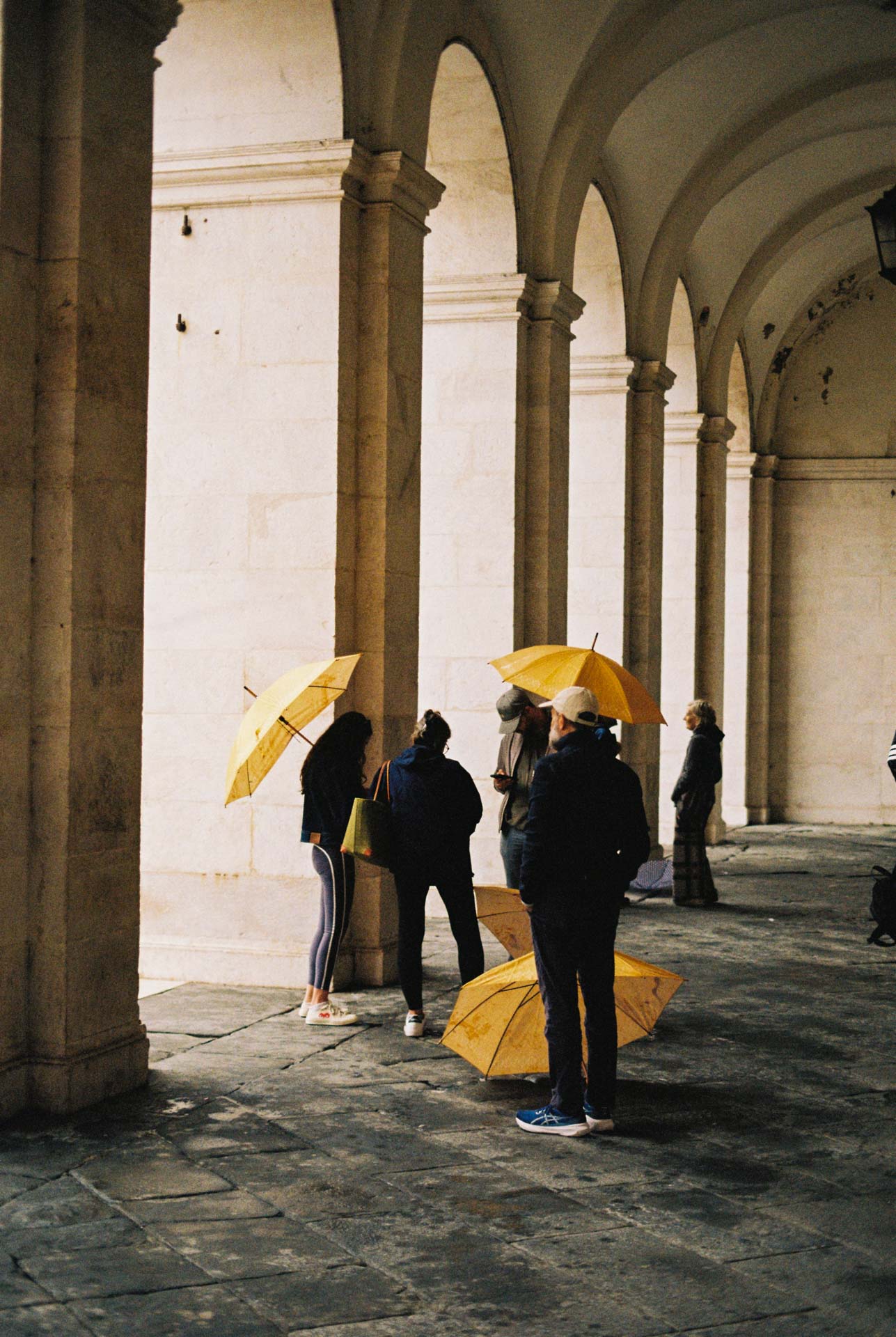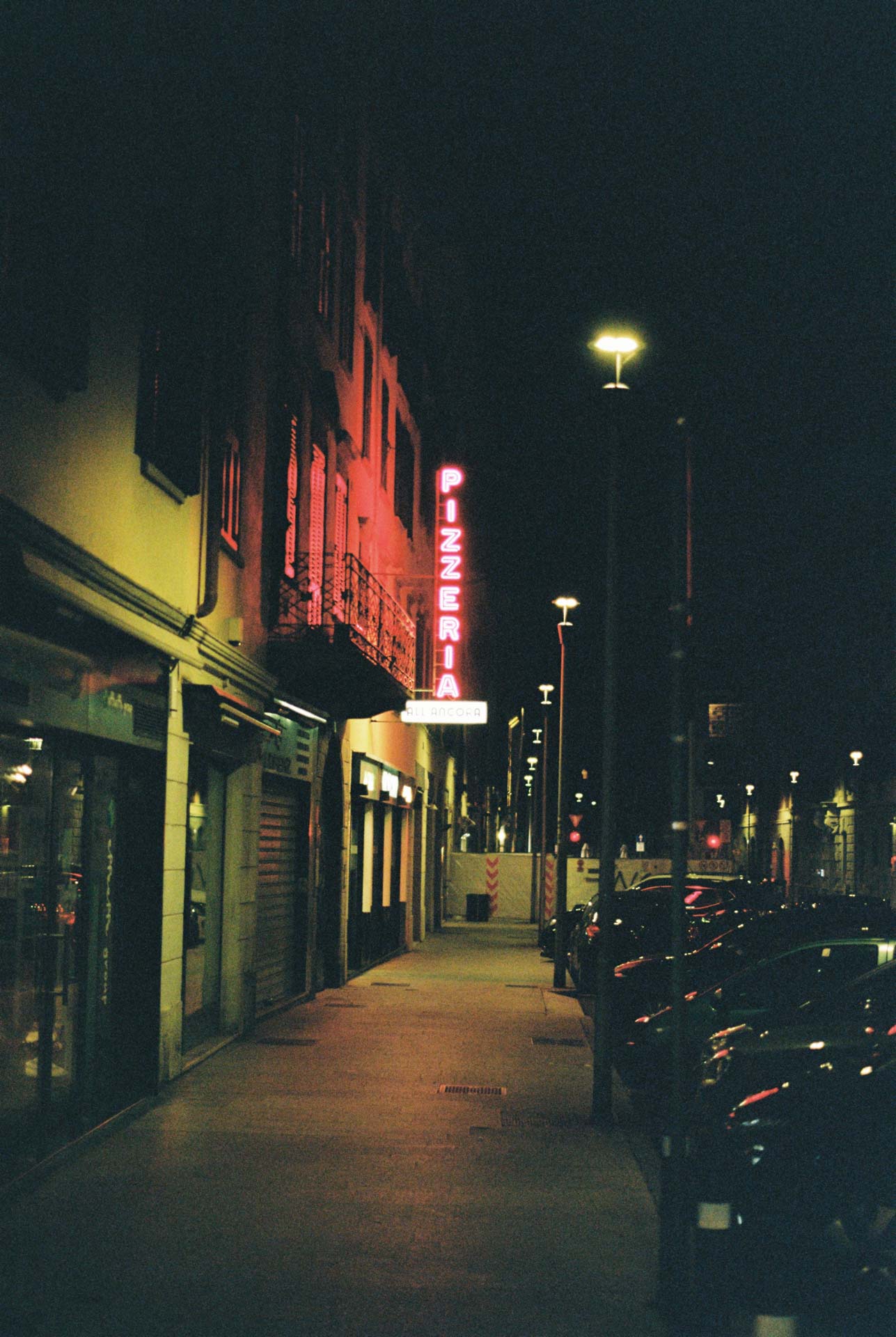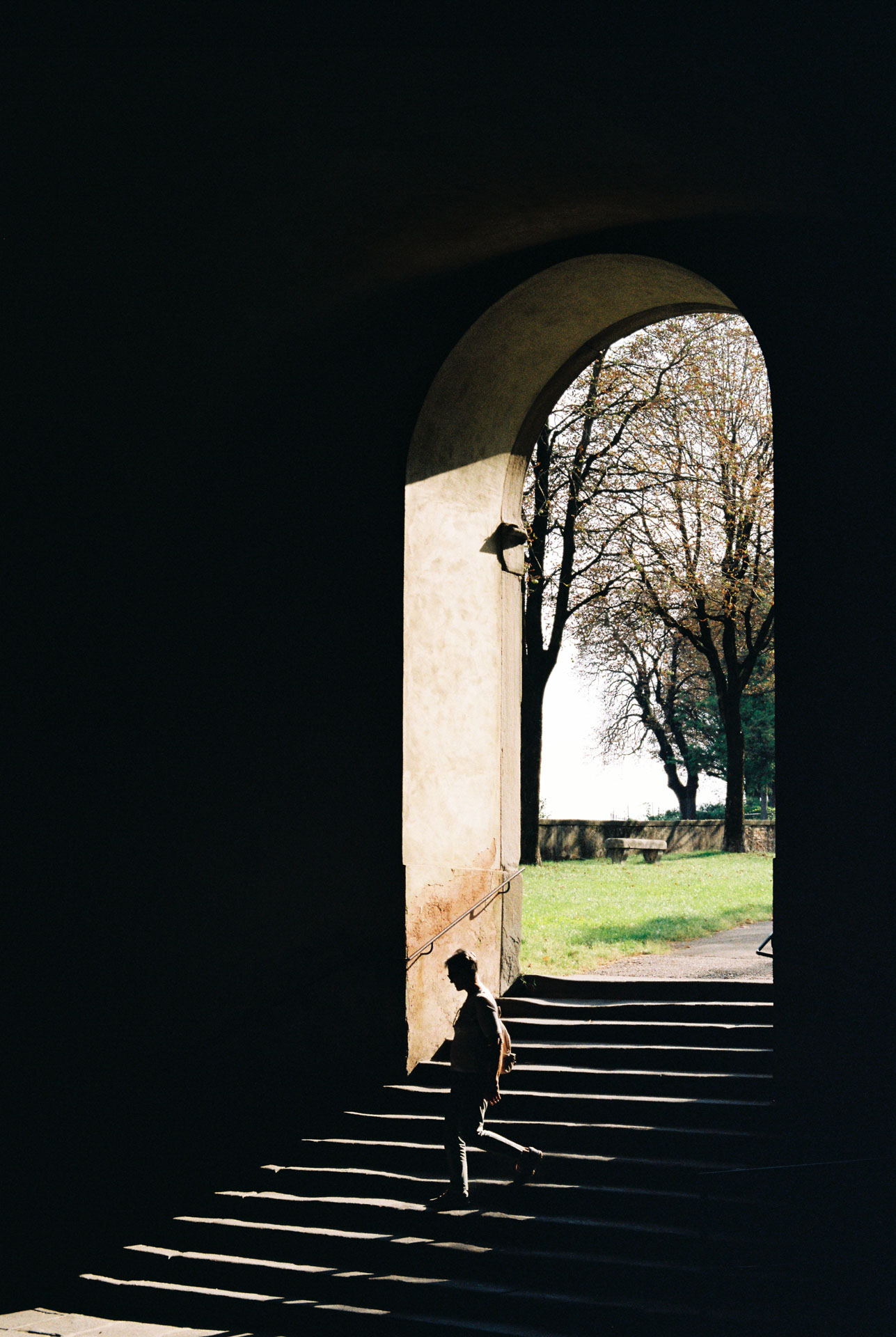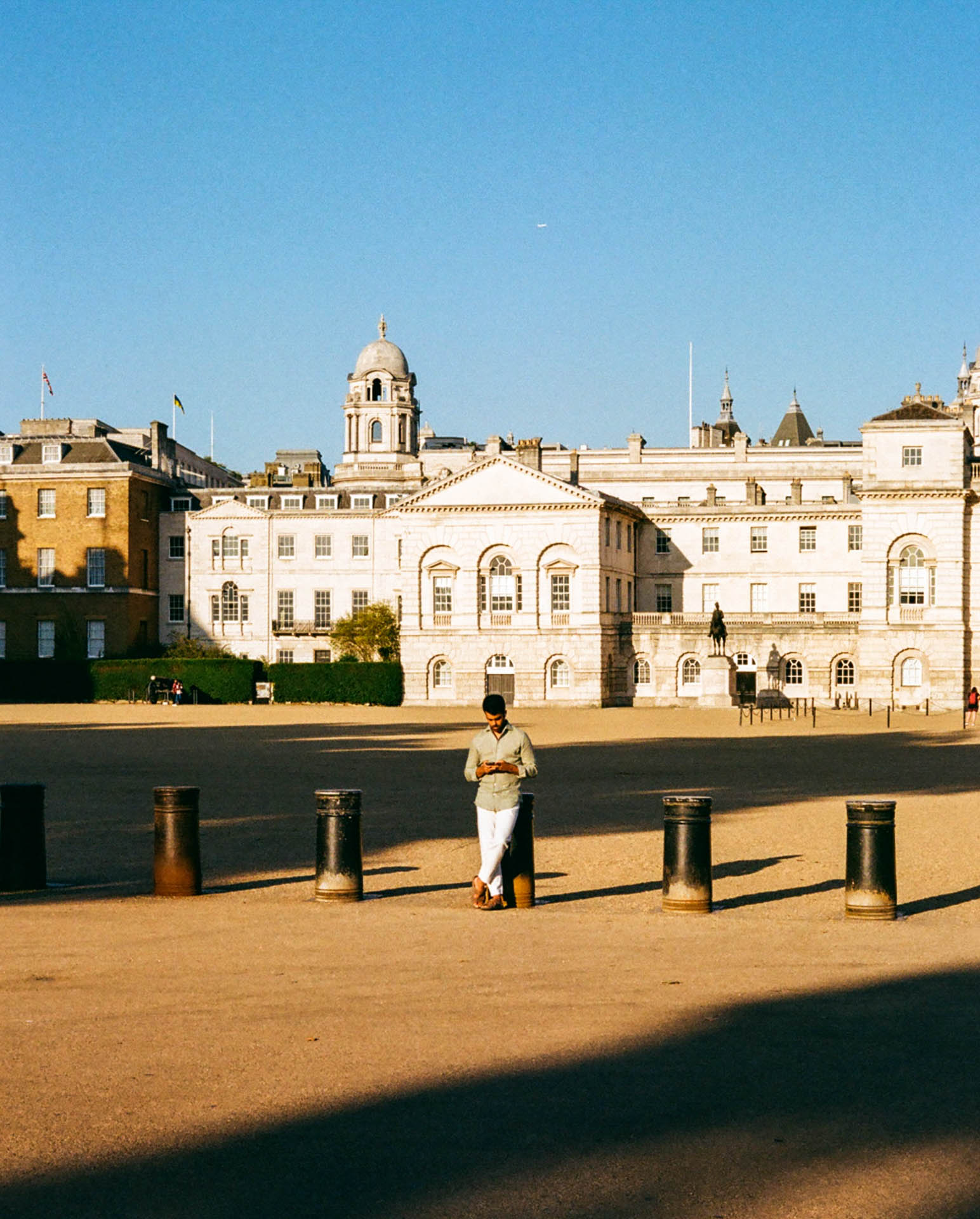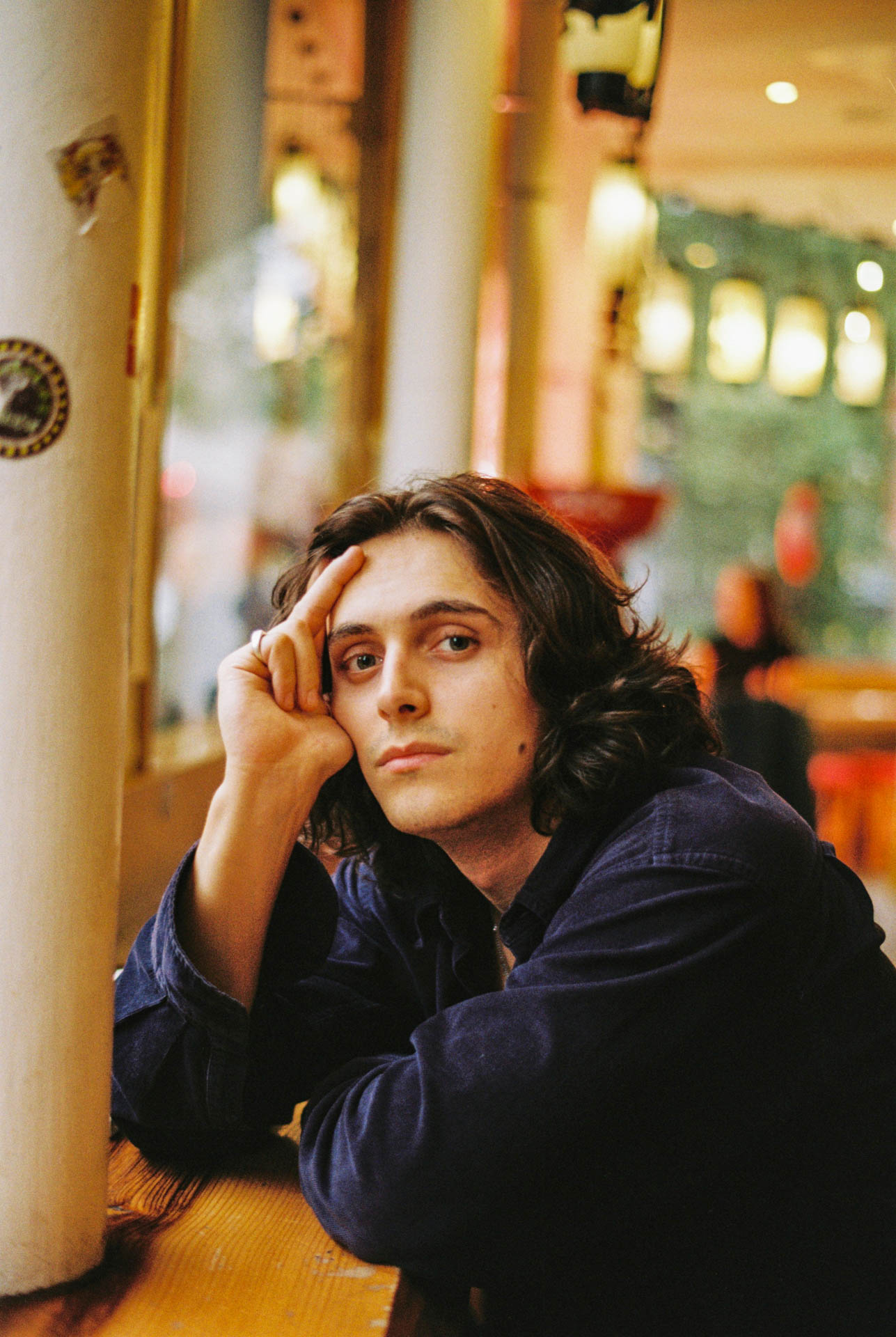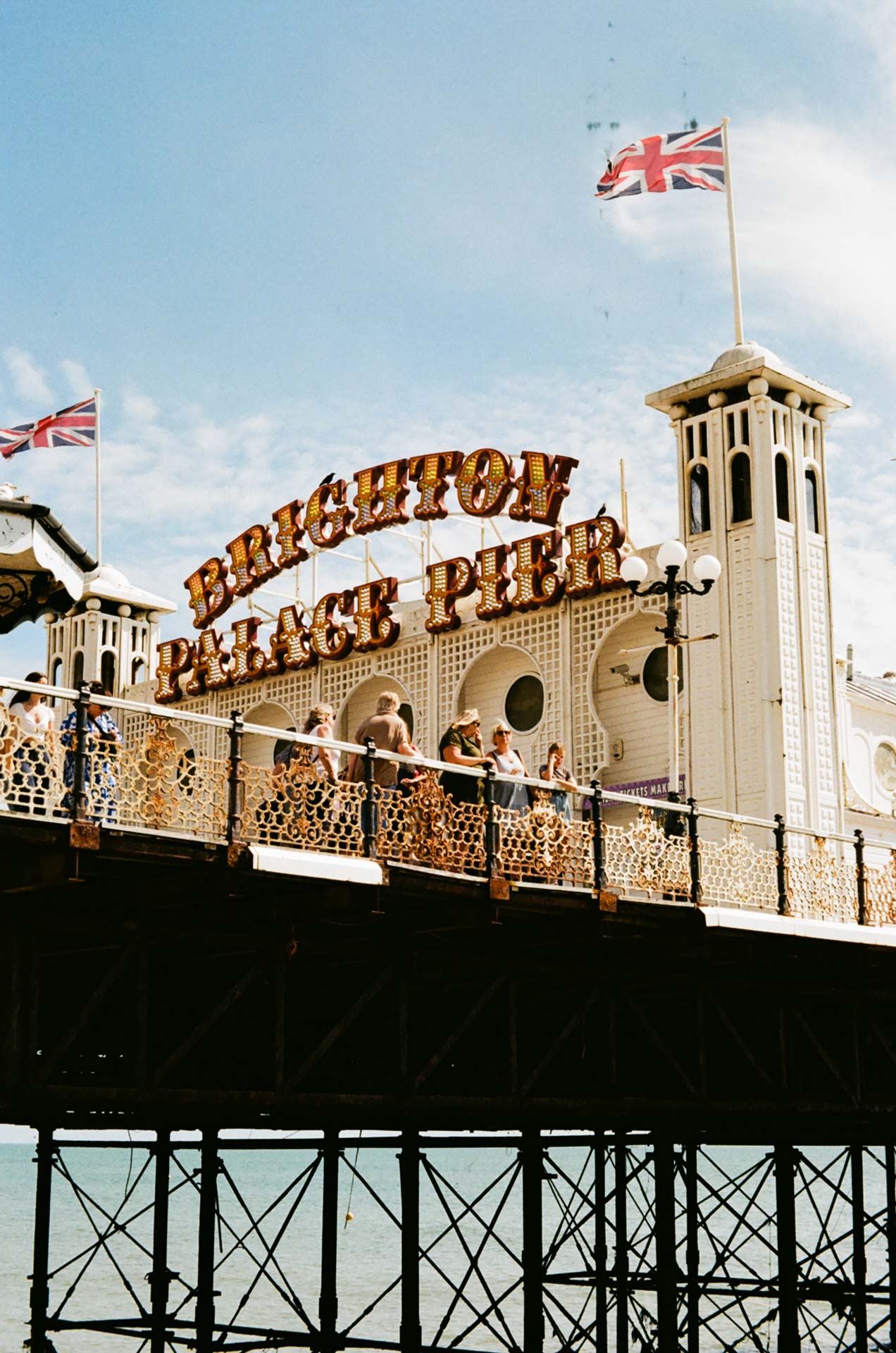5 Things to Consider Before Buying Your First Film Camera.
Quick Summary
This blog contains all the things I wish someone had said to me when I was buying my first film camera.
To be clear, this is NOT a list of recommended cameras, there are already plenty of these kicking around Reddit, YouTube and forums.
This is a place for me to share some key considerations and thoughts before you pull the trigger and spend your money…
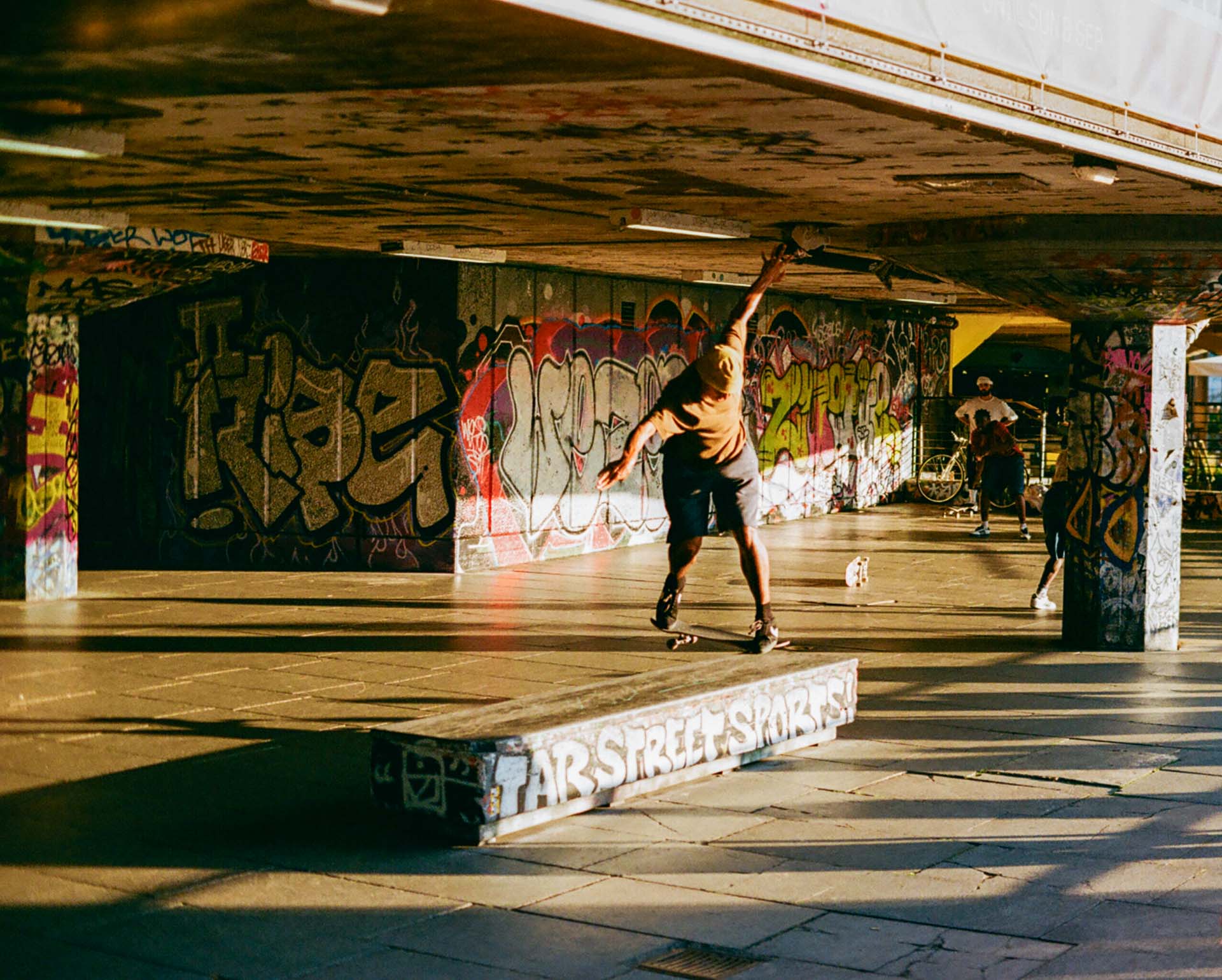
Key Takeaways:
- You can often get your hands on a film camera for a lot less than you think
- You don’t need to spend hundreds to get something worth shooting on
- More gear does not make you a better photographer
- Keep things simple for yourself and consider a prime lens
1 - Do You Actually Need to Buy a Film Camera?
Despite many of us growing up firmly in the digital age, it’s worth remembering that many people you know likely pre-date this technologically saturated world.
In my experience, folks tend to have relics of their analogue past tucked away at the back of drawers or boxed up in dusty attics.
To us, these objects are valuable, interesting and intriguing, but you’d be surprised at how many film cameras, lenses and accessories are just kicking around, unused and taking up space at the annoyance of their current owners.
So, before you open your wallet and start buying up gear, it’s worth asking around – reach out to parents, grandparents, friends, or anyone else who might have old film cameras and lenses.
It’s very likely that someone, somewhere, has something you can get your hands on to start shooting with.
Whether it’s given to you, lent, or even sold to you cheaply, if you can pick one up this way, I’d thoroughly recommend it.
Not only is it just nice to have a personal connection to your camera, it doesn’t really matter, at this stage in your journey, if you have the “best” camera or lens in your possession.
What matters is that you have something you can shoot with.
What you’re really after here is to be able to dip your toe into the hobby whilst limiting your financial investment until you’re sure you’d like to pursue this further.
So, if you can put a few rolls of film through one of these and start to the learn the ropes, you’ll at least be confident enough to know that this is something you want to really get into or not.
What’s more, anything you learn using this camera will be knowledge taken forward and applied to any future analogue efforts.
Any manual camera will help you learn fundamental concepts like the exposure triangle which will be vital for you developing as a photographer!
This hobby is expensive enough already, so please don’t be picky – if someone offers you the chance to get shooting for free or very little, take them up on the offer!
It doesn’t matter if this camera doesn’t feature on “Top 10 Film Cameras for Beginners” lists…
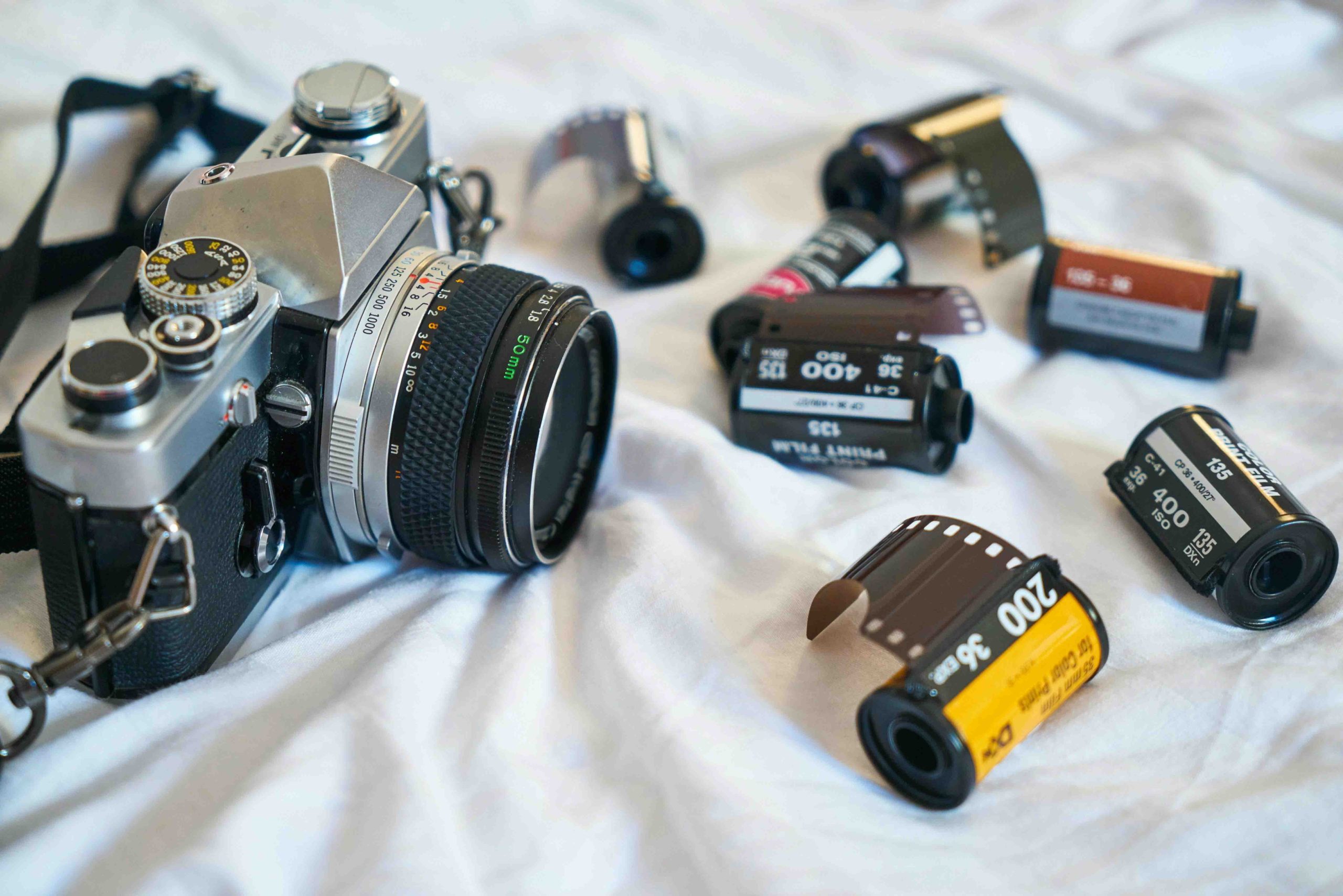
2 - Do Your Best to Avoid the Film Camera Gear Trap
More money does not mean more quality and more gear does not mean better photos.
This is worth keeping in mind at all times.
It’s easy to fall into the trap of thinking “if I had that particular camera or lens then I’ll be a better photographer”.
Or, upon seeing your favourite Instagram photographer using a particular model, you may catch yourself thinking “if I had that gear, I could take those shots.”
The truth is, there’s only one thing that makes you a “better” photographer, whatever that means, and that’s…taking more photos.
Practicing your craft. Engaging in your own creative process. Making mistakes.
Gear envy is hard to shake – for one, the attraction of this hobby is rarely limited to the creative output of a photograph.
It is a tactile, hands-on passion and there are so many different things to try out and experiment with – new lenses, different camera models, fully mechanical, fully automatic, SLRs, rangefinders, the list goes on and on…
But, if you’re just starting out, you really need to focus on the basics before you let your eyes wander.
For one, it’s highly unlikely that you are at a level where you can really take advantage of more complicated features that some cameras have on offer.
What’s more, investing in a new lens or camera may only provide marginal gains – whereas a more experienced photographer may be able to take full advantage of these and use them to elevate their craft, you have to be honest with yourself to see if you’re in a place where you could really extract value from the additional expense.
I would look to spend as little as possible and focus my efforts on shooting film and getting familiar with core film photography elements such as the exposure triangle and the Sunny 16 Rule.
This isn’t to say if you have money to burn that you shouldn’t kick off your analogue journey with a Leica and throw caution to the wind, but you can’t buy your way to taking “good” photos and “good” photos can be taken on just about any camera/lens, regardless of expense!
The photos below were taken on a Pentax SFXn setup you can get for around £50-70 online ($60-80)…
3 - Maximise Your Film Shooting & Processing Budget.
As mentioned before, what makes you better at taking photos is the act of taking photos. To do this on film, you need to ensure you can afford film itself!
This isn’t cheap, I’m afraid – there’s a reason that #staybrokeshootfilm is a movement, after all.
So, if you’re set on buying a camera, it’s worth accounting for buying film and getting it processed when looking at the budget you have available.
In my opinion, if this is your first foray into the world of analogue photography, it’s better to spend a little less on the camera/lens combination itself and maximise the budget you have available to shoot and develop film (within reasonable limits).
A good way to do this is to secure a camera body that is in good condition and then get the cheapest lens you can find that achieves a base level of quality.
Typically, if you just input the lens details into Google you’ll be able to see user reviews as well as shots taken with that lens – if you’re willing to dig around a bit you can get some great glass!
Here’s an example of a lens review found online – you can see it is rated for variables such as value, sharpness and handling.
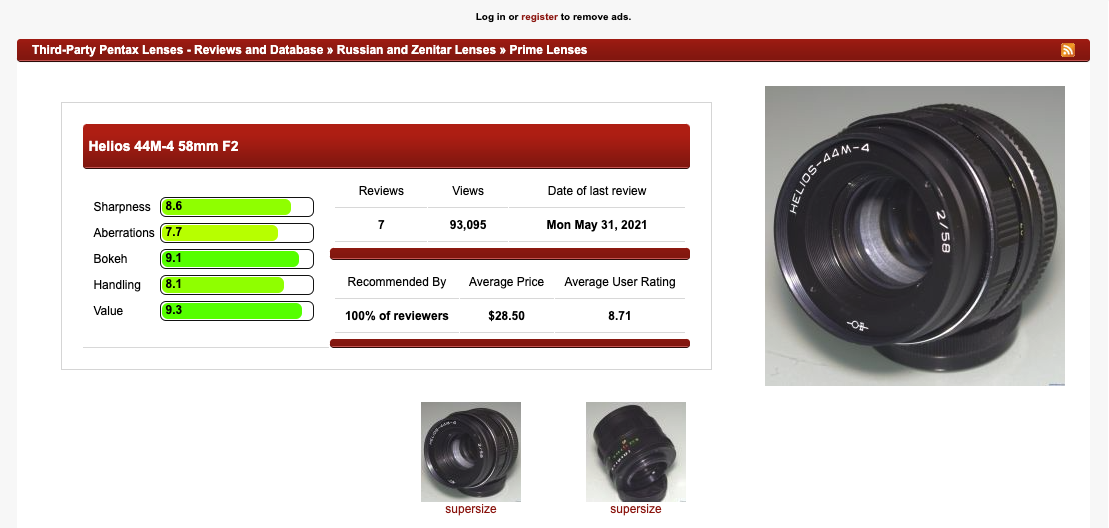
Then, when you feel like you have got the hang of things a little and you know what you like to shoot, you can start to invest in lenses that suit your purpose.
If you find you love shooting street photography, you’d probably opt for a different lens than someone spending all day trying to take photographs of wild animals from a distance and vice versa.
Additionally, if you start to look outside more recognised names, you can get some absolutely great cameras and lenses for a fraction of the cost.
Ricoh, Praktica, Minolta, and a whole host of other manufacturers and brands can deliver fantastic performance and leave you spending hundreds less than more well known makes and models of similar levels.
It’s also worth noting that if you’re looking to mainly use your camera as a “snapshot” camera for documenting memories of you and your friends, you really don’t need to spend much at all.
In fact, if this is what appeals to you, you could stick to finding some cheaper point and shoot cameras or even look into half frame cameras.
Regardless, just make sure whatever you do that you’ve left enough in the bank to actually buy and process your film!
4 - Consider a Prime Lens.
The world of lenses can be incredibly confusing, especially if you’re new to photography in general and not just new to analogue.
To help remedy this confusion, and make things a little easier when making decisions on what to buy, I tend to recommend starting out with a prime lens.
A prime lens has a fixed focal length, meaning they don’t zoom. Common examples are 50mm, 35mm and 25mm lenses.
Whilst this might sound like a negative rather than a positive, let me explain…
For one, prime lenses do not have to cope with a wide range of focal lengths in the way that zoom lenses do – this means they tend to be sharper and produce “crispier” images than their zoom counterparts.
They also typically have larger apertures. This refers to numbers like “f/1.2” or “f/2.8” that you might see – confusingly, the smaller the number, the larger the aperture…
Having a larger aperture means better performance in low-light condition and also a shallower depth of field, making them perfect for things like portrait photography or when you’d like your subject to “stand out” from the background.
Additionally, prime lenses are often much smaller, more compact, and lighter, which means they’re easier to carry, use, and wield on a day-to-day basis. Due to their fewer mechanical parts, they’re also incredibly fast to focus.
All of this taken into consideration, prime lens offer powerful and versatile shooting capabilities perfectly suited to architectural, portrait, landscape, street and travel photography and, importantly, offer great value too.
Luckily, that’s about everything I shoot, hence why I use a prime lens every time I step out of the door with my camera.
However, there is one other reason why I recommend prime lenses to film photography beginners, and photography beginners in general…
They provide one less variable!
Using a fixed focus lens forces you to learn to operate creatively within the limitations of the lens. This means you’re really considering your composition and approach with each shot and, as every shot is using the same focal length, you start to “train” yourself to think in that way!
To showcase their versatility, here are 4 shots taken with the same 50mm lens…
5 - Don’t Forget About Your Local Camera Shop!
It’s easy to overlook your local camera shop in lieu of using eBay or larger retailers, but in my experience these places can be great for finding second-hand film cameras.
Shopping local can give you the opportunity to chat to knowledgeable staff who can guide you through their gear, help with repairs, and may even offer warranties on used equipment.
Typically, purchasing from an actual store is more expensive, but it does give you peace of mind that your camera actually works as well as the option of actually holding the camera in your hands and inspecting it before buying, ensuring it feels right for you.
My local camera shop is Harrison’s in Sheffield – their advice and guidance when I was starting out was incredibly valuable to me.
However, this isn’t to say you shouldn’t use eBay or similar sites.
I know good friends of mine who exclusively use these to great effect, and if you’re hunting for real bargains they’re definitely where you should be looking alongside places like car boot sales and markets.
But if you’d like a bit more reassurance or guidance, pop into your local camera shop for a chat.
Online forums and marketplaces also offer more direct interactions with film enthusiasts. Often, sellers in these spaces are hobbyists themselves, eager to give detailed descriptions and fair prices to those starting out.
Plus, the conversations happening in these communities can offer valuable insights into what to look for, helping you avoid common pitfalls or spending too much just for a brand name or hype.
So, it’s worth shopping around a bit and assessing your options!
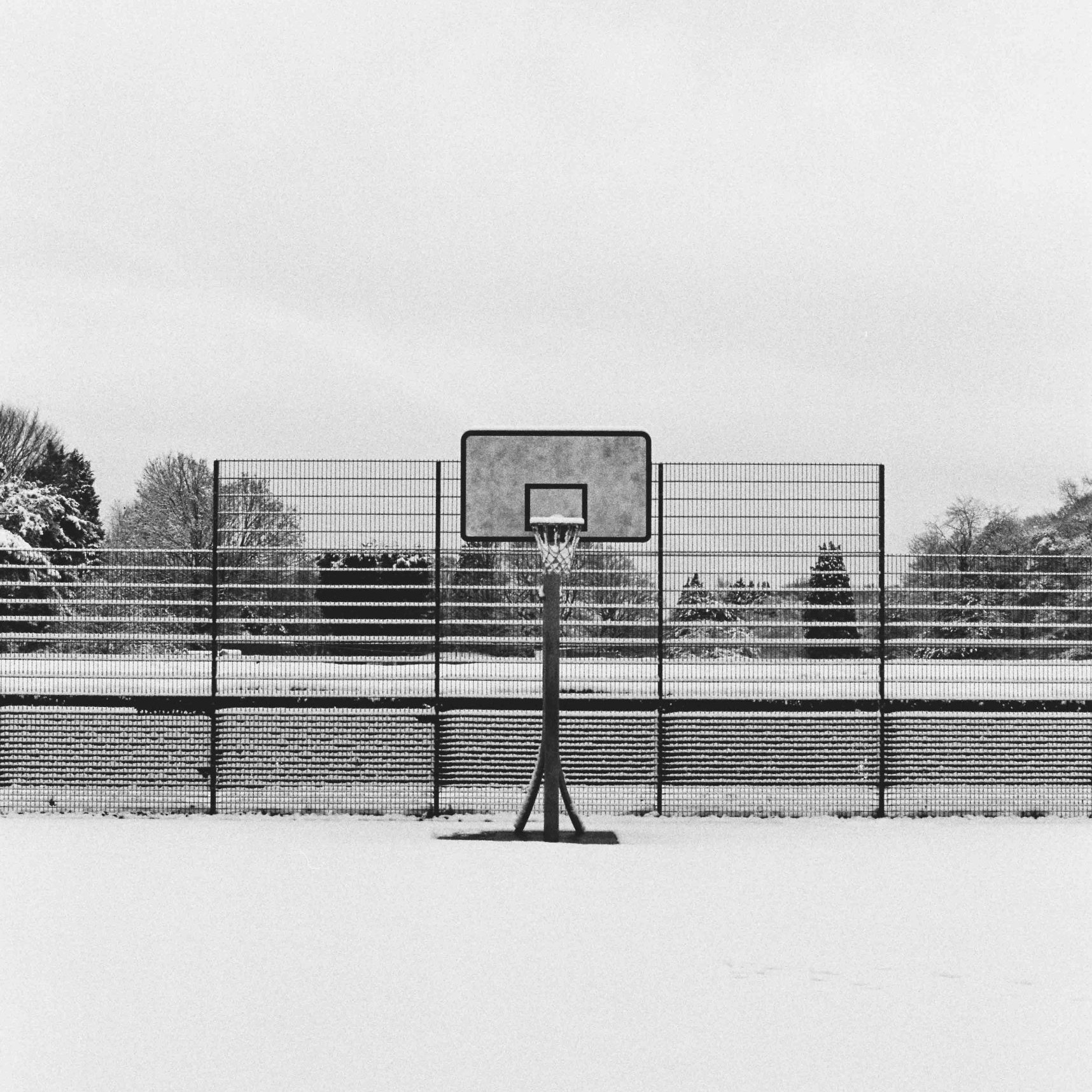
Final Thoughts...
Buying your first film camera can feel overwhelming, but it’s important to remember that photography is ultimately about the images you create, not the gear you use.
So, with this in mind, start your journey on the right foot by avoiding the hype and getting going without breaking the bank.
Take your time, explore your options, ask questions to the community, and most importantly, enjoy the process of discovering the world of film photography.
Learn fundamental concepts like the exposure triangle and ensure you’re logging your metadata when you shoot so you can become a better photographer with each and every roll.
The right camera is the one that gets you shooting!
Fred Ostrovskis-Wilkes
I am a photographer, writer and design agency founder based in Sheffield, UK.
